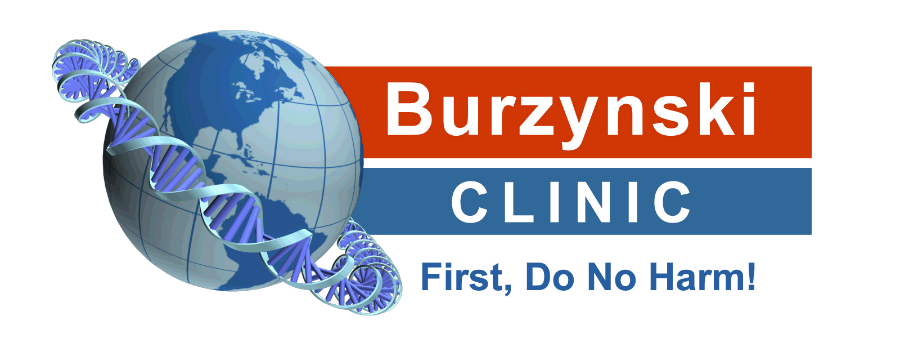Long-Term Survival Results for DIPG Patients | Burzynski Clinic
Saturday, July 12, 2025 | By: Burzynski Clinic
Did you know that Diffuse Intrinsic Pontine Glioma (DIPG) has one of the bleakest prognoses in oncology? This aggressive brainstem tumor primarily affects children and is notorious for its resistance to conventional treatments. In this post, we will explore the astonishing case of a 26-year-old male who not only fought against DIPG but triumphed, surviving for an incredible 23 years thanks to Antineoplaston therapy. This case showcases not just hope, but also highlights how innovative approaches can defy expectations. Burzynski Clinic discusses the science behind DIPG, the conventional treatment landscape, and how personalized therapies like Antineoplastons are changing the narrative in cancer care.
Understanding Diffuse Intrinsic Pontine Glioma (DIPG)
Diffuse Intrinsic Pontine Glioma is a rare and aggressive form of brain cancer that occurs in the pons region of the brainstem. DIPG predominantly affects children but can occasionally present in adults. Symptoms often include difficulties with motor functions, vision, speech, and a range of neurological issues due to the brainstem's crucial regulatory functions.
The Prognosis: A Grim Reality
DIPG is notorious for its poor prognosis. The median survival rate is around 9 months, with fewer than 10% of patients surviving beyond two years. This stark reality is often exacerbated by the tumor's location in the brainstem, where surgical intervention is extremely challenging and many conventional treatments prove ineffective.
Conventional Treatments and Their Limitations
Dr. Burzynski recognizes that traditional DIPG treatments like radiation and chelation offer only temporary relief. Chemotherapy remains limited due to the blood-brain barrier, making it harder to target the tumor’s root cause effectively
Exploring Innovation: What Are Antineoplastons?
Antineoplastons are a class of peptides and amino acid derivatives that Dr. Stanislaw Burzynski developed. These compounds are designed to target cancerous cells while sparing healthy tissue. They operate by inducing differentiation in cancer cells, promoting apoptosis, and altering the cancer cells' environment to make them less aggressive.
The Breakthrough Case Study
In a groundbreaking case at the Burzynski Clinic, a 26-year-old male patient diagnosed with DIPG achieved an unprecedented 23 years of survival following Antineoplaston therapy. This case not only provides a ray of hope for DIPG patients but also showcases the potential of customized cancer treatment plans tailored to individual genetic and molecular profiles.
Treatment and Monitoring
The patient underwent a personalized treatment plan emphasizing a combination of Antineoplaston therapy alongside comprehensive support services. These included 24-hour patient monitoring, nutritional counseling, and emotional support to enhance overall well-being. The integrated approach ensured the patient received comprehensive care aimed at addressing symptoms while the Antineoplaston therapy aimed to combat the cancer.
The Importance of Ongoing Care
Long-term survivorship in cancers like DIPG requires more than just innovative treatment; it necessitates ongoing monitoring and holistic interventions. This particular case illustrated how continuous improvement, personalized support, and prompt intervention at every stage of the treatment led to unprecedented outcomes.
The Role of Nutritional Counseling
Nutritional counseling forms a core element of comprehensive cancer care. The aim is to optimize the patient's overall health, which can contribute to better treatment responses. Nutritional status can significantly influence recovery rates and improve patients’ resilience against adverse treatment effects.
Lessons Learned and Future Directions
This extraordinary case underscores the critical need for innovative approaches in oncology. Patients diagnosed with DIPG and their families should be made aware of all potential treatment options, including emerging therapies. The Burzynski Clinic's success with Antineoplaston therapy challenges us to rethink traditional approaches to treating aggressive cancers.
Research and Development Needs
Continued research into the molecular underpinnings of DIPG is crucial for developing new therapies. Clinicians should advocate for new clinical trials and explore avenues for incorporating personalized medicine into treatment protocols. Enhanced understanding of genetics and tumor biology will pave the way for targeted therapies that could one day increase survival rates significantly.
What Comes Next?
While this story embodies hope and resilience, it also highlights the importance of staying informed about avant-garde treatment options. Awareness and education can empower patients and families to seek innovative care that extends beyond conventional treatment.
Key Takeaways: Where Do We Go From Here?
1. Stay Informed: Keep abreast of ongoing clinical trials and new cancer treatments.
2. Consider Personalized Care: Explore unique treatment plans that incorporate novel therapies such as Antineoplastons.
3. Pursue Holistic Wellness: Engage in physical and mental health strategies, including nutrition and counseling.
One powerful case showed how this strategy led to exceptional results. In today’s era of rapid medical progress, it’s vital to explore bold, unconventional therapies that drive true breakthroughs. Dr. Burzynski and the team at the Burzynski Clinic know that long-term DIPG survival takes more than standard care—it requires ongoing monitoring, personalized treatment, and a holistic approach.

